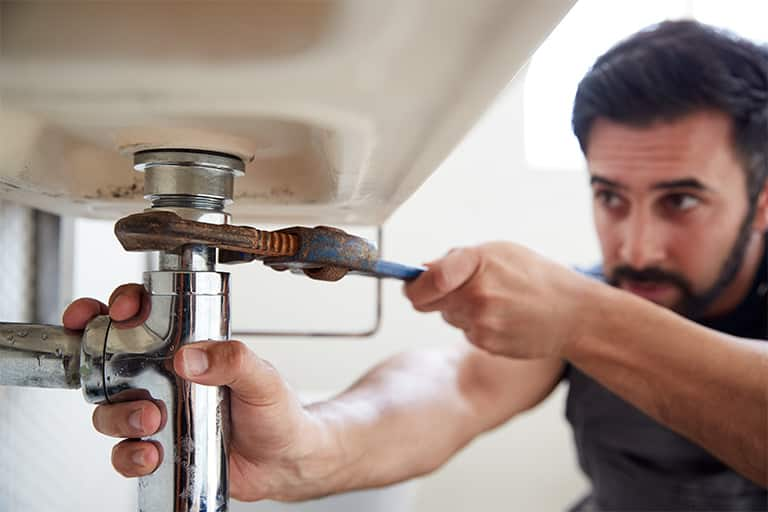We have noticed the article pertaining to Locating water leaks directly below on the internet and believe it made perfect sense to relate it with you here.

Early discovery of leaking water lines can mitigate a potential calamity. Some little water leaks may not be visible.
1. Check Out the Water Meter
Every home has a water meter. Inspecting it is a surefire way that aids you discover leakages. For beginners, turn off all the water sources. Ensure nobody will purge, use the tap, shower, run the cleaning device or dish washer. From there, go to the meter and watch if it will alter. Given that no one is using it, there need to be no movements. If it moves, that shows a fast-moving leak. If you detect no changes, wait an hour or two and inspect back once again. This indicates you might have a sluggish leakage that might even be underground.
2. Examine Water Usage
Evaluate your water bills and also track your water consumption. As the one paying it, you need to observe if there are any disparities. If you identify sudden changes, despite your intake being the same, it means that you have leakages in your plumbing system. Remember, your water expense should drop under the same array on a monthly basis. An unexpected spike in your bill suggests a fast-moving leak.
Meanwhile, a stable increase monthly, despite the exact same behaviors, shows you have a slow leak that's also slowly escalating. Call a plumber to extensively inspect your residential or commercial property, especially if you really feel a cozy area on your floor with piping below.
3. Do a Food Coloring Examination
When it pertains to water consumption, 30% originates from commodes. Examination to see if they are running properly. Decrease specks of food color in the container and also wait 10 mins. If the color somehow infiltrates your bowl during that time without flushing, there's a leakage between the storage tank as well as bowl.
4. Asses Outside Lines
Do not fail to remember to check your exterior water lines as well. Should water seep out of the link, you have a loosened rubber gasket. One tiny leakage can squander loads of water and spike your water bill.
5. Evaluate the situation and also examine
Home owners must make it a practice to check under the sink counters and also also inside cabinets for any kind of bad odor or mold and mildew development. These two warnings suggest a leakage so punctual focus is required. Doing routine inspections, also bi-annually, can save you from a major problem.
If you understand your house is currently old, keep a careful eye on your heating systems, hose pipes, pipes etc. Look for discolorations and deteriorating as many devices and pipes have a life expectancy. They will also naturally deteriorate due to deterioration. Don't wait for it to escalate if you believe dripping water lines in your plumbing system. Call an expert plumber right now so you don't end up with a dreadful mess in your house.
Early detection of dripping water lines can mitigate a possible catastrophe. Some little water leaks might not be noticeable. Checking it is a guaranteed way that assists you uncover leaks. One little leak can squander loads of water as well as spike your water costs.
If you suspect leaking water lines in your plumbing system, don't wait for it to intensify.
WARNING SIGNS OF WATER LEAKAGE BEHIND THE WALL
PERSISTENT MUSTY ODORS
As water slowly drips from a leaky pipe inside the wall, flooring and sheetrock stay damp and develop an odor similar to wet cardboard. It generates a musty smell that can help you find hidden leaks.
MOLD IN UNUSUAL AREAS
Mold usually grows in wet areas like kitchens, baths and laundry rooms. If you spot the stuff on walls or baseboards in other rooms of the house, it’s a good indicator of undetected water leaks.
STAINS THAT GROW
When mold thrives around a leaky pipe, it sometimes takes hold on the inside surface of the affected wall. A growing stain on otherwise clean sheetrock is often your sign of a hidden plumbing problem.
PEELING OR BUBBLING WALLPAPER / PAINT
This clue is easy to miss in rooms that don’t get much use. When you see wallpaper separating along seams or paint bubbling or flaking off the wall, blame sheetrock that stays wet because of an undetected leak.
BUCKLED CEILINGS AND STAINED FLOORS
If ceilings or floors in bathrooms, kitchens or laundry areas develop structural problems, don’t rule out constant damp inside the walls. Wet sheetrock can affect adjacent framing, flooring and ceilings.
https://www.servicemasterbyzaba.com/blog/how-to-detect-water-leakage-in-walls/

We were shown that article on Top leak detection hacks from an acquaintance on a different website. Are you aware of someone else who is in to the subject? Please feel free to share it. We treasure reading our article about Finding hidden leaks.